Since the US team arrived in camp the weather has been spectacular, the air has been clear and calm. Well, change is in the wind. Finally, around lunchtime today, we were pleased to see that the flags that represent most of the participating countries flying high in the Arctic wind.
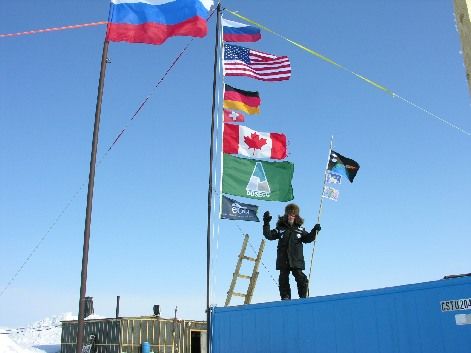 The Arctic wind lifts the colors of the participating nations... and my flags!
The Arctic wind lifts the colors of the participating nations... and my flags!
As the day went on, the winds have steadily increased. With a strong north wind blowing, the down-hole logging team finishing their 30 hour run of measurements, Volker Neth and I went out to survey the ice road on the vestikhot. For the first time since arriving, I can say I was really cold... riding on top (not inside!) of a vestikhot at 25 mph at -20 F is COLD!!! The batteries in my video camera were freezing, so I was holding the camera on the exhaust pipe to try to keep it warm... but that will be a story for another day... (with video!)
Once we arrived at the drilling platform, the chief Russian scientist Pavel Minyuk, was quickly motioning me to come inside the rig. The first sediment cores in several days were tripping out of the hole. As I told you the other day, I wanted to introduce you to drilling. First, let me introduce you to the cast of characters. Doug Schnurrenberg of Bolder CO, is the drilling supervisor, he keeps us all safe and is the boss of the platform. The lead driller on the day shift is John Joice from Chico, CA. Learning the ropes from these two experienced drillers are the Russian drillers, Roman and Vasilli.
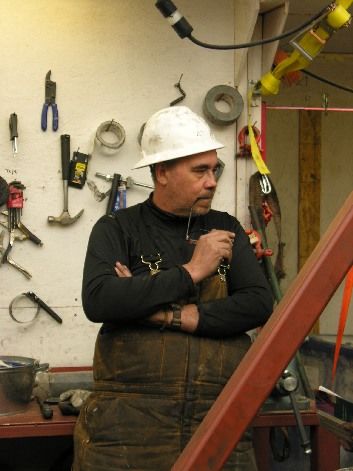 DOSEC Drilling supervisor, Doug Schnurrenberger of Boulder CO
DOSEC Drilling supervisor, Doug Schnurrenberger of Boulder CO
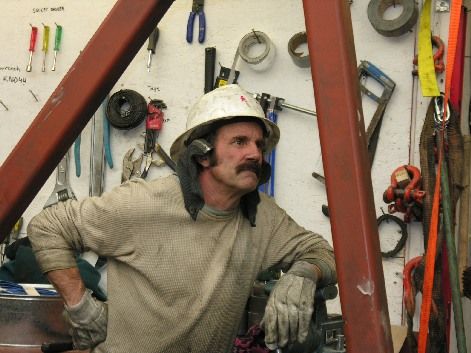 Lead driller, John Joice, of Chico CA
Lead driller, John Joice, of Chico CA
 The day shift Russian drilling team.
The day shift Russian drilling team.
Here is a quick intro to drilling from our work two days ago.
http://
Back to the work today... as I said, the first sediment cores were tripping up the pipe. Within a few minutes, I had in my hands lake sediment cores that were several million years old!
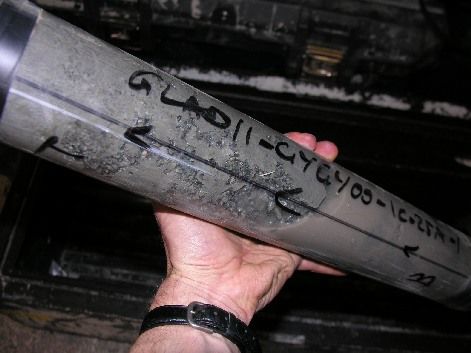 The first sediment core I saw removed from the lake.
The first sediment core I saw removed from the lake.
Once cores are being extracted, the drilling process increases in complexity... too much for a short three-minute web video. In short, we cut the cores into sections approximately one meter long, take small samples from each end, measure basic properties such as length and mass before packaging them in insulated containers to be transported back to the camp lab.
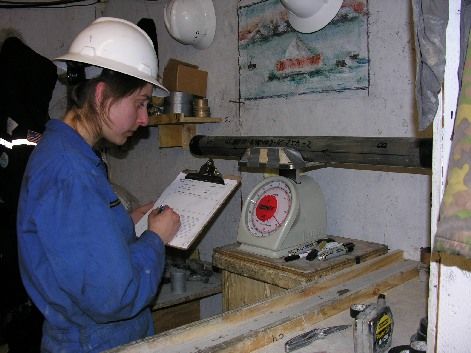 Julia Gotschalk measuring a core sample
Julia Gotschalk measuring a core sample
As the wind continued to pick up, part of the rig tent was blowing open. Doug and I went up on the rig roof to re-Velcro the tent together. By the time we climbed back down, we were both cold.
In the next few days, I will explain a bit more of the coring process as I continue to learn my way around the rig.
As we returned to camp from the drill site, the blowing snow on the lake formed two beautiful sun-dogs
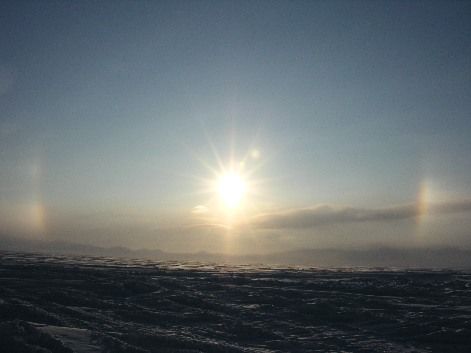 Evening sundog.
Evening sundog.
T-Mart... staying warm at Lake E... at least when I am not on top of a vestikhot.

